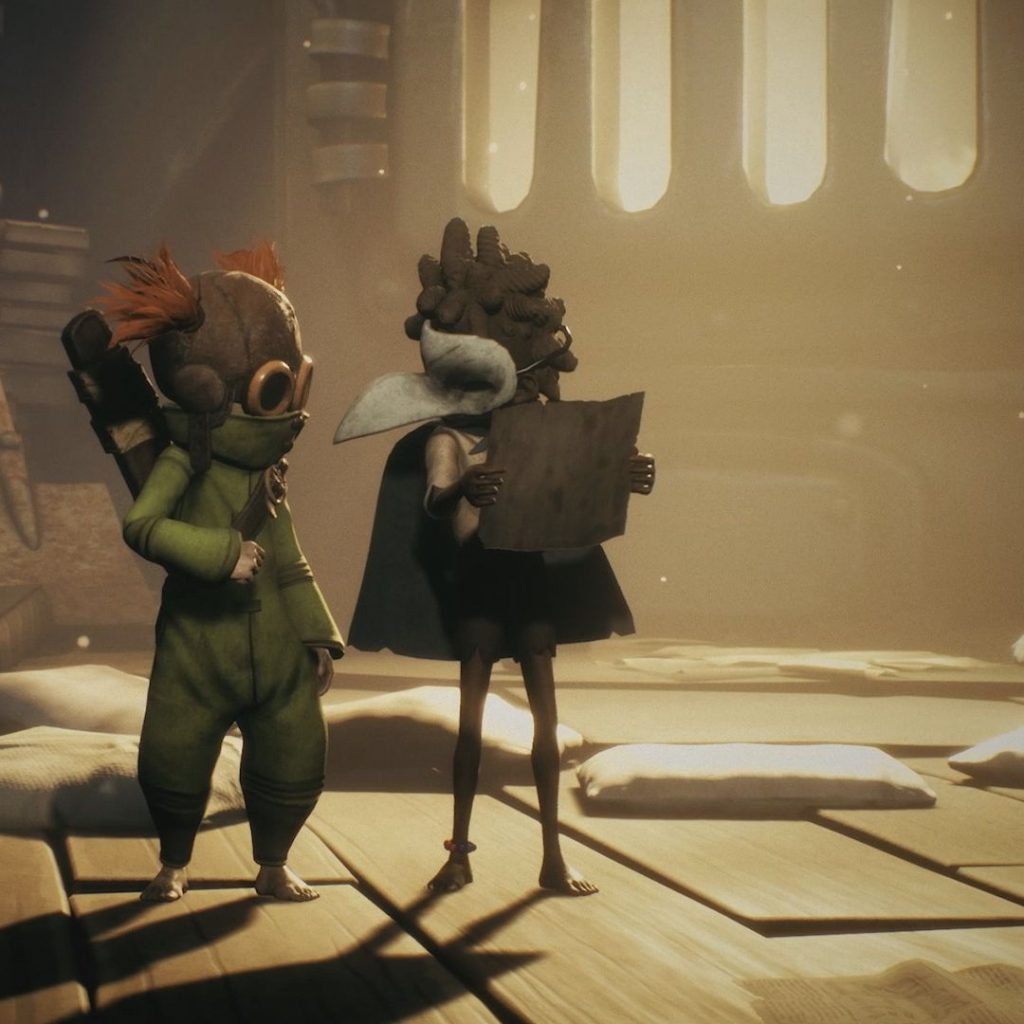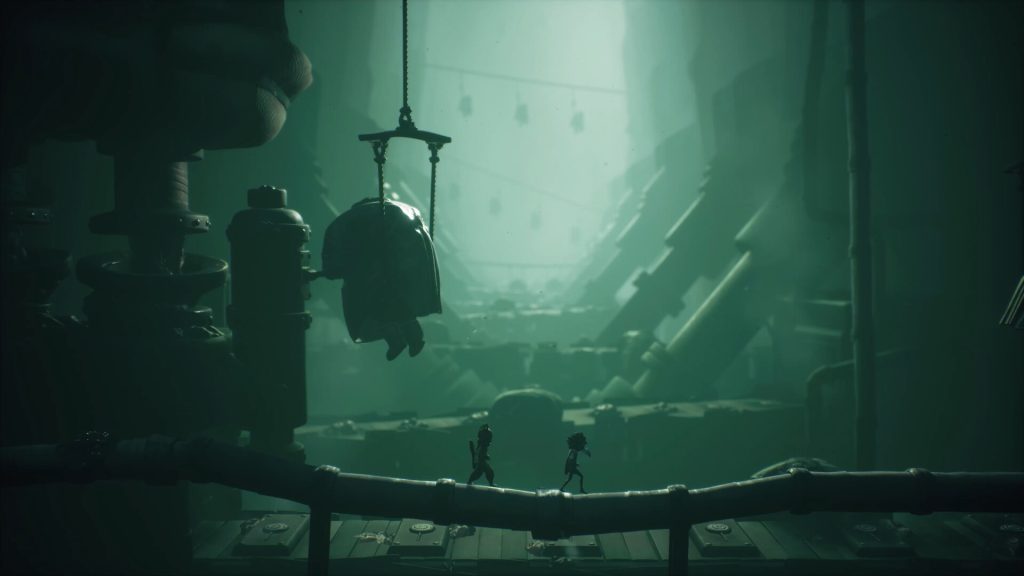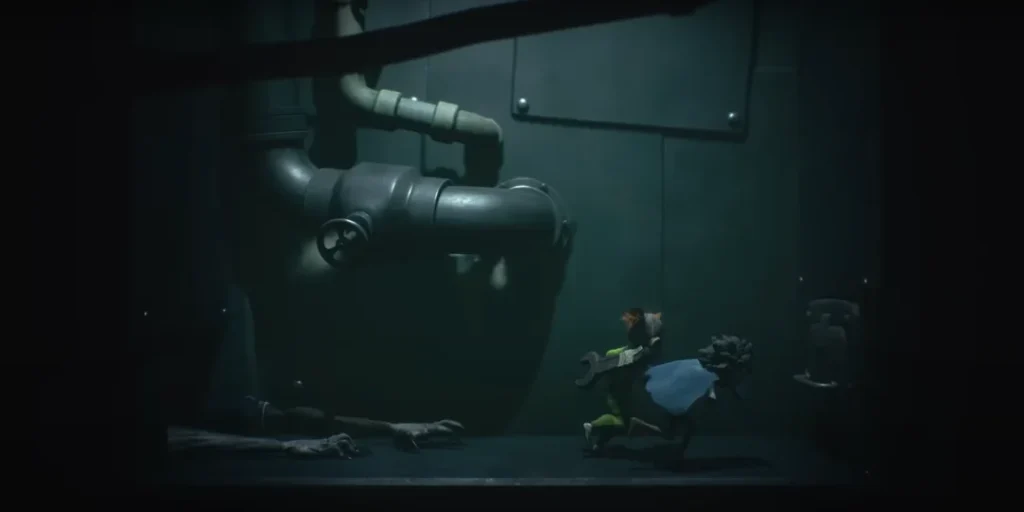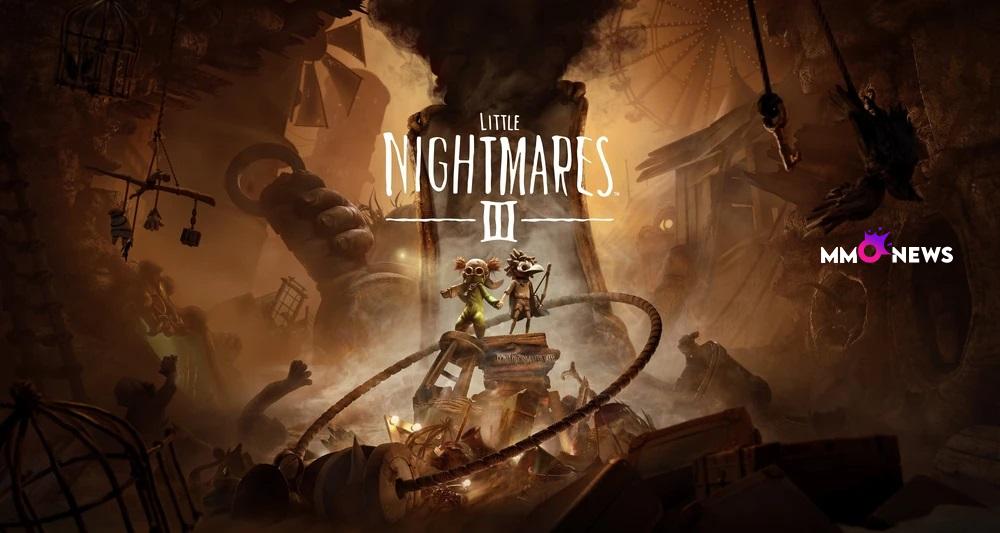The door groans, the light thins, and two small silhouettes slip through a seam in the world. Little Nightmares III returns to the places where childhood fear grows tall and adult shapes bend the rules. A new studio steers the series, but the heartbeat is the same: you are tiny, the world is hungry, and escape demands courage measured in seconds.
Supermassive Games develops, Bandai Namco publishes, and the sequel leans into a bold idea the series has only hinted at until now: shared peril. The adventure is built for two, with online co-op letting players catch breath together, count to three, and run. Solo players bring an AI companion, but the spirit holds. This is a story about finding a way forward in a place designed to notice you.
The handover and the vision
A baton pass like this changes the gait. Bandai Namco remains the label and steward. Supermassive, known for character-driven, tension-first storytelling, takes the director’s chair. The studio talks about companionship under pressure, about puzzle layouts that only resolve when two minds pull in sync, and about keeping silence powerful. The world is called the Nowhere, a layered nightmare where rules shift, edges warp, and small hands leave smudges on giant machinery.
A global launch is set for October 10, 2025 on PC and consoles. Online co-op is confirmed. The cast is new, but the intent is familiar: make a place where dread is felt at floor level, where every table leg and vent grate carries meaning, and where the biggest set piece is a quiet hallway that suddenly wakes up.
Welcome to the Spiral
Everything inside the Nowhere curls into the Spiral, a chain of self-contained nightmares with shifting logic. Think of it as a necklace of bad dreams: each bead its own space, rules, and predator. One region is a wind-carved grave city where sand erases footprints faster than you can make them. Another is a failing candy factory where kindness has been repackaged into something sticky and watchful. Somewhere else, a funfair promenade glistens in the rain, lights half-flickered, promises half-true.
Scale is a mood. Door handles are almost a plan. Conveyor levers look useful, until they clang loud enough to invite attention. The series’ camera language returns: low angles, long shadows, and the awkward intimacy of objects built for someone larger. The Spiral is the design, but the feeling is the thread: smallness with agency.
A duo built for escape

Two children anchor the journey, and they carry different ways through the same trouble. Low brings a bow, a line through air, a way to touch what is out of reach. Alone wields a wrench, a way to break what wants to trap, a lever to coax mechanisms awake. The pairing is not about power fantasy; it is about leverage and timing.
- Low: bow and arrows. Reaches switches strung too high, severs rope, staggers a flying nuisance for a second that matters.
- Alone: wrench. Breaks brittle panels, shifts valves into place, finishes off a threat that Low has already tilted off balance.
The game offers online co-op with each player controlling one child. In solo, an AI partner navigates, solves, and sprints with you. The pacing is classic Little Nightmares: long quiets, short sprints, and a heartbeat that climbs when a corridor narrows.
Duo at a glance
| Character | Signature item or ability | Role in puzzles or danger | Notes |
|---|---|---|---|
| Low | Bow and arrows | Hits high targets, severs ropes, staggers flyers | Opens paths at range, precise timing |
| Alone | Wrench | Smashes barriers, cranks devices, finishes stunned threats | Force and leverage, creates timing windows |
How it feels to play
Little Nightmares III keeps three beats in rotation Reading means studying silhouettes and sound. A scrap of cloth caught in a grate might be a hint to crouch. A fleck of sugar on a floor might be a breadcrumb to a pipe. Moving is a vocabulary of climbs, squeezes, and boosts. One child cups hands, the other reaches. Improvising is the art of making tools out of nuisance: a bucket becomes a blocker; a rope becomes a rhythm.
Co-op changes puzzle grammar. One player creates an opening, the other steps through. Timing gates matter more when a wrench swing needs to punctuate a rope cut. Parallel corridors turn level design into a duet. The failure loop stays short. A miss costs seconds, not minutes, which keeps dread alive but never lets it calcify into frustration.
Combat is not the point, but danger is a system. A flailing arm can be avoided, a flying pest can be staggered, and a stunned threat can be neutralized if you earn a window. The game prefers the intelligence of evasion to the noise of confrontation. Breath is the best resource.
The Spiral’s places

Regions in the Spiral are clean, clear ideas. They have shapes, rhythms, and tyrants.
- The Necropolis rides on wind and absence. Sand hisses through arches, and a giant crib yawns beneath broken lintels. The Monster Baby hunts here. It feels like a memory made huge and wrong. Noise carries too far. Hiding is a texture question: fabric, shadow, grain.
- The Candy Factory has rules. The Supervisor counts everything and everyone. Conveyor belts, jar lifts, and sugar hoppers are puzzles that pretend to be logistics. Sweetness is camouflage. The floor is grippy, the aisles are tight, and the lights blink when you wish they would not.
- The funfair promenade is rain on tin. Neon bleeds into puddles. Games are rigged against the small and quiet. A prize shelf is a platforming level. A shuttered stall is a crawlspace that keeps promises in whispers.
These places are not levels in the usual sense. They are moods with verbs. Every region pairs soft light with longer shadows and asks you to pull sense out of scale.
Companionship as design
Sharing the burden is not just story; it is structure. Designers build layouts around two-handed problems. A sagging beam becomes an elevator if a wrench holds its breath for six seconds. A broken line becomes a bridge if an arrow knows where to land. Doors are not puzzles because they are locked; they are puzzles because they are heavy. Co-op makes weight into a mechanic.
Communication is the glue. In co-op, unspoken countdowns create momentum. In solo, the AI partner follows the same logic, giving you the feeling of a choreographed escape rather than a series of button prompts. The best sequences read like trust exercises with moving parts.
Enemies, hazards, and the big moments

Residents are the shape of danger. They are too large, too near, and too curious. The Monster Baby turns the Necropolis into a cruel Playground, rewriting scale so that stairs feel like a cliff and a toy feels like a trap. In the Factory, Candy Weevils break like a tide if you learn their stimulus and place your feet. The Supervisor’s many arms count without mercy, and the act of not being counted becomes a stealth lesson.
Set pieces come in two modes. The first is cat-and-mouse, with silence and stillness as your asset. The second is the hallway that wakes up and becomes a sprint. Both work because the world has weight. Wood moans, metal rings, and fabric drags with truth. When a chase begins, it feels earned.
Art, sound, and the feel of things
The series’ diorama look returns with intent. Rooms are staged like sets, with light knifing through slats and colors graded to hold tension at a simmer. Pastels get dirty as you travel. Dust hangs in gold, then turns cold blue when a corridor squeezes. Props tell stories that cut across text. A stack of jars becomes a ladder and a threat, depending on whether it wobbles.
Audio is a fourth wall you feel. Scuffs on wood, a clink two rooms away, a breath that comes too fast and too loud. Music is used with care, arriving like a rumor and leaving like a draft. The goal is to make silence say more than dialogue could.
Continuity without repetition
Little Nightmares III does not retread Six and Mono’s exact path. It inherits the grammar, not the sentences. Predatory adults, warped domesticity, and the ache of being small persist. The new duo finds their own cuts in the same fabric. Easter eggs and echoes are threaded for fans who know where to look, but the story is framed to welcome anyone who starts here.
The Spiral gives the series a way to expand without making the world feel arbitrary. Each region feels authored and specific. The mood is continuity; the plot is departure.
Platforms, editions, and distribution
The game is planned for PlayStation 5, PlayStation 4, Xbox Series X|S, Xbox One, PC, Nintendo Switch, and the next-generation Switch model. Digital and physical editions include a standard, a Deluxe with cosmetic and behind-the-scenes extras, and a collector offering. An expansion pass introduces two post-launch chapters designed as new loops within the Spiral.
Release timing and the runway to launch
Release is dated for October 10, 2025. Leading to that day, expect deeper dives on regions, a focused look at co-op staging, and clarity on edition contents. The studio’s cadence to date has balanced mood reels with practical walkthroughs, a good omen for explaining puzzle logic without defusing it.
System requirements
Minimum – PC
- OS: Windows 11
- CPU: Intel Core i5-6500 or AMD Ryzen 3 1200
- RAM: 8 GB
- GPU: NVIDIA GeForce GTX 1060 or AMD Radeon RX 580
- Notes: Aims for 1080p Low at 60 FPS
Recommended – PC
- OS: Windows 11
- CPU: Intel Core i5-8400 or AMD Ryzen 5 1600
- RAM: 12 GB
- GPU: NVIDIA GeForce RTX 2080 (8 GB) or AMD Radeon RX 6800
- Notes: Aims for 1080p High at 60 FPS
For newcomers to Little Nightmares
The series speaks in rooms and objects, not cutscenes and speeches. You are a small figure balancing hope against scale. Nothing is explained outright. Everything is signaled, if you learn to read. The thrill is not in beating a boss; it is in making a door that was not meant for you become your door.
The first two entries became cult landmarks because they trusted players to connect meanings and because their spaces felt touched by human hands. The third keeps that intimacy and pushes into companionship. Two tools, two perspectives, one rhythm. It is not power. It is resilience with a witness.
Why this sequel matters now
Horror changes with context, but the fear of being small beside systems that do not see you as a person is evergreen. Little Nightmares III frames that feeling without cruelty, then hands you a partner who makes the next step possible. The game does not try to shock you cheap. It tries to hold your attention with craftsmanship and surprise you with grace.
When the door is too heavy, a friend is a mechanic. When the corridor is too long, a second pair of feet changes the sound of the floor. The Spiral is still a place that wants to sort you into a jar or a ledger. Two players make a third option: out.
Closing thoughts
The best Little Nightmares moments begin with a question you feel in your knees: can we fit, can we make it, can we be quiet enough. This sequel keeps those questions close and gives you someone to hear your whisper. The camera still loves long shadows. The props still remember hands that were not yours. And the sprint still starts a beat before you expect it to.
Little Nightmares III protects the soul of the series while making space for trust. When the city-sized menace finally turns its head, you will steady your breath together, count to three, and move. The door is heavy. That is the point. It opens because two small people insist.
